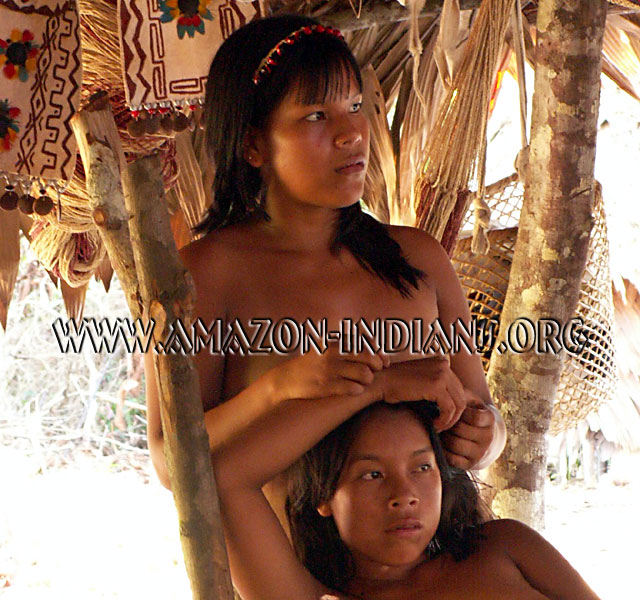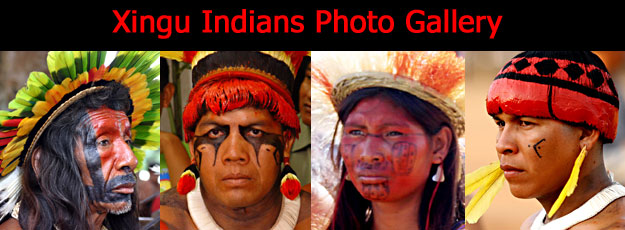|
|
Bora
Indians
Survival of a Native
Culture - Page 2 of 5
The batons typically have
shells attached to them that add to the musical harmony. I first witnessed
traditional Bora native dances in Colombia near Leticia where they often
spend the whole night dancing in their ceremonies.
One authentic item you can view at the Bora native community in Iquitos is
the "Manguaré" drum. "Manguaré" drums have different forms, depending on whether
they are male or female, and are used in some Bora ceremonies. In addition,
you can see traditional bark cloth that the Boras make by pounding the bark
of a palm tree. The Boras peel strips of bark from the tree and pound it
with a wooden hammer. After they wet and pound it until the outer bark
disintegrates, only the inner bark is left. The inner bark is the natural
fiber used for traditional Bora clothing. The bark clothes have a coarse,
inflexible look and the texture of burlap. The bark clothing is colored
with natural dyes. Yellow colors are obtained from a ginger plant and black
from pressed green fruits of the "huito" tree. The "huito" liquid is clear when
first painted, but later turns black as it is oxidized by the air.
In addition to bark cloth, the Bora Indians in Iquitos have beautiful bags
that are woven from "chambira," a fiber obtained from a palm tree. The fibers
used in these bags are typically dyed using native plants and the bags
really are hand-made works of art.
Return to Main Index Page
| Page 1
| Page 3
| Page 4
| Page 5
|



